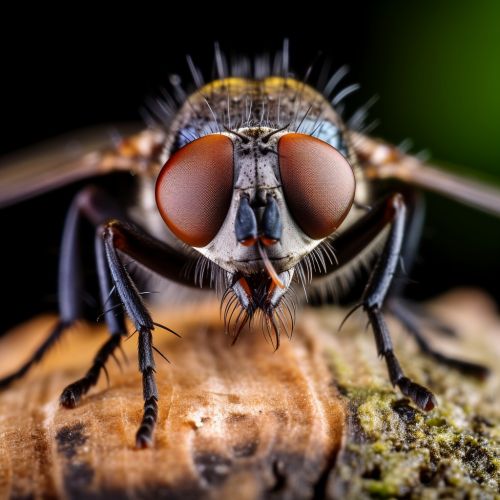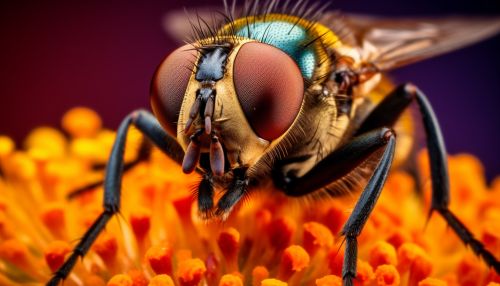Diptera
Introduction
Diptera, commonly known as true flies, is an order of insects that includes a diverse range of species such as mosquitoes, gnats, and houseflies. The name "Diptera" is derived from the Greek words "di," meaning two, and "ptera," meaning wings, referring to the characteristic feature of having a single pair of flight wings. This distinguishes Diptera from other insects, which typically possess two pairs of wings.


Morphology
True flies exhibit a wide range of sizes and shapes, from tiny midges to large horseflies. However, all Diptera share certain morphological characteristics. The most distinctive feature is the presence of a single pair of wings. The hind wings are reduced to small, knob-like structures called halteres, which serve as gyroscopic organs, providing balance during flight.
Diptera have compound eyes that cover a large part of their head, providing them with a wide field of vision. Their mouthparts are adapted for piercing, sucking, lapping, or filtering, depending on their specific feeding habits. The body of a fly is divided into three sections: the head, thorax, and abdomen, each with specific functions and structures.
Life Cycle
The life cycle of Diptera consists of four stages: egg, larva, pupa, and adult. This type of life cycle is known as complete metamorphosis. The female fly lays eggs on a suitable substrate, often decaying organic matter or stagnant water, depending on the species. The eggs hatch into larvae, commonly referred to as maggots, which feed voraciously to accumulate energy for the pupal stage.
During the pupal stage, the larva undergoes a dramatic transformation, developing into an adult fly. The adult fly emerges from the pupal case, ready to mate and continue the cycle. The duration of the life cycle varies widely among different species of Diptera, ranging from a few days to several months.
Ecology and Behavior
Diptera occupy a wide range of habitats, from aquatic to terrestrial, and from tropical to polar regions. They play crucial roles in ecosystems as pollinators, decomposers, and as a food source for other animals. Some species of flies are also known to be vectors of diseases, transmitting pathogens to humans and other animals.
The behavior of Diptera is diverse and complex. Many species exhibit sophisticated mating rituals, while others display unique survival strategies, such as mimicry or camouflage. The study of Diptera behavior provides valuable insights into insect ecology and evolution.
Classification and Evolution
The order Diptera is one of the largest and most diverse orders of insects, comprising over 150,000 described species. Diptera are classified into two suborders: Nematocera, which includes mosquitoes and gnats, and Brachycera, which includes houseflies and blowflies.
The evolution of Diptera is a subject of ongoing research. Fossil evidence suggests that Diptera first appeared in the Middle Triassic period, approximately 240 million years ago. The development of flight and the adaptation to diverse ecological niches have contributed to the remarkable diversity and success of this order.
